Sanjeev Kumar
Deep Learning for Early Alzheimer Disease Detection with MRI Scans
Jan 17, 2025Abstract:Alzheimer's Disease is a neurodegenerative condition characterized by dementia and impairment in neurological function. The study primarily focuses on the individuals above age 40, affecting their memory, behavior, and cognitive processes of the brain. Alzheimer's disease requires diagnosis by a detailed assessment of MRI scans and neuropsychological tests of the patients. This project compares existing deep learning models in the pursuit of enhancing the accuracy and efficiency of AD diagnosis, specifically focusing on the Convolutional Neural Network, Bayesian Convolutional Neural Network, and the U-net model with the Open Access Series of Imaging Studies brain MRI dataset. Besides, to ensure robustness and reliability in the model evaluations, we address the challenge of imbalance in data. We then perform rigorous evaluation to determine strengths and weaknesses for each model by considering sensitivity, specificity, and computational efficiency. This comparative analysis would shed light on the future role of AI in revolutionizing AD diagnostics but also paved ways for future innovation in medical imaging and the management of neurodegenerative diseases.
Mimetic Muscle Rehabilitation Analysis Using Clustering of Low Dimensional 3D Kinect Data
Feb 15, 2023Abstract:Facial nerve paresis is a severe complication that arises post-head and neck surgery; This results in articulation problems, facial asymmetry, and severe problems in non-verbal communication. To overcome the side effects of post-surgery facial paralysis, rehabilitation requires which last for several weeks. This paper discusses an unsupervised approach to rehabilitating patients who have temporary facial paralysis due to damage in mimetic muscles. The work aims to make the rehabilitation process objective compared to the current subjective approach, such as House-Brackmann (HB) scale. Also, the approach will assist clinicians by reducing their workload in assessing the improvement during rehabilitation. This paper focuses on the clustering approach to monitor the rehabilitation process. We compare the results obtained from different clustering algorithms on various forms of the same data set, namely dynamic form, data expressed as functional data using B-spline basis expansion, and by finding the functional principal components of the functional data. The study contains data set of 85 distinct patients with 120 measurements obtained using a Kinect stereo-vision camera. The method distinguish effectively between patients with the least and greatest degree of facial paralysis, however patients with adjacent degrees of paralysis provide some challenges. In addition, we compared the cluster results to the HB scale outputs.
A New Approach in MRI Signal Processing for Detecting the Axonal Organization of the Brain
Jul 24, 2022

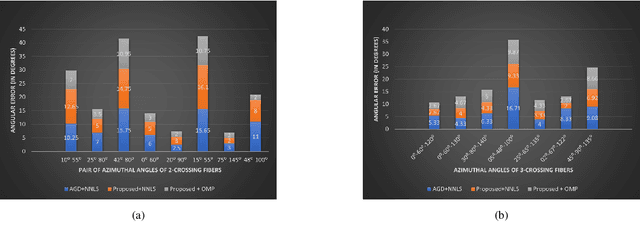
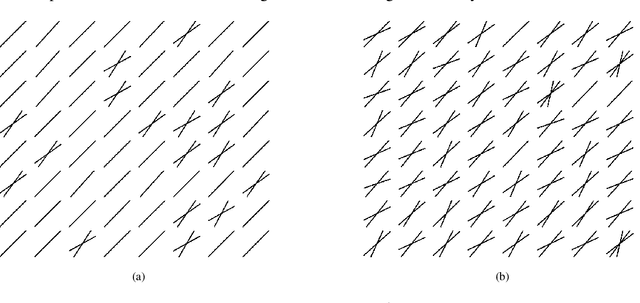
Abstract:This article introduces a new methodology for reconstructing the white matter fiber pathways of brain in diffusion MRI. Usually, the signal intensity values will be lesser in the direction of higher diffusivity. The proposed approach picks the diffusion sensitivity gradient directions (dSGD), where the signal intensities are diminutive. Considering these as the directions of maximum diffusivity, we generate directions uniformly distributed around the picked dSGD. These newly computed uniformly spaced directions are considered gradient directions used in the reconstruction process. The state-of-art schemes like uniform gradient direction (UGD) have redundancy in the gradient direction, and adaptive gradient direction (AGD) has a constraint of solving linear system twice per voxel. These two limitations are turned down in this study simultaneously. Estimating gradient directions with the proposed scheme is employed in the multi-compartmental mixture models for calculating the fiber orientations. Simulation and experiments on the real data evaluate the feasibility of the proposed method.
Diagnosing Web Data of ICTs to Provide Focused Assistance in Agricultural Adoptions
Oct 29, 2021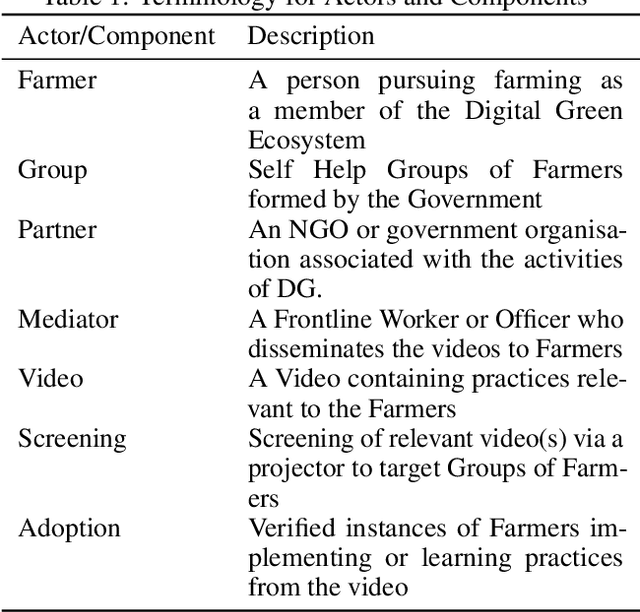
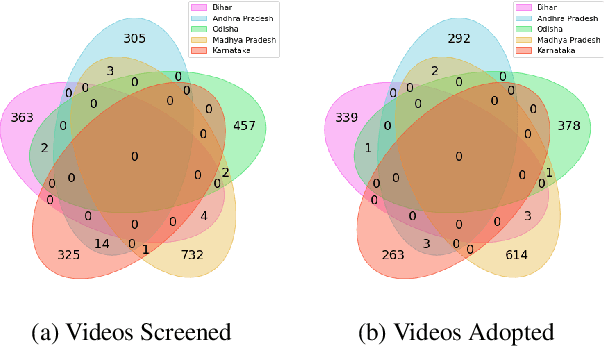

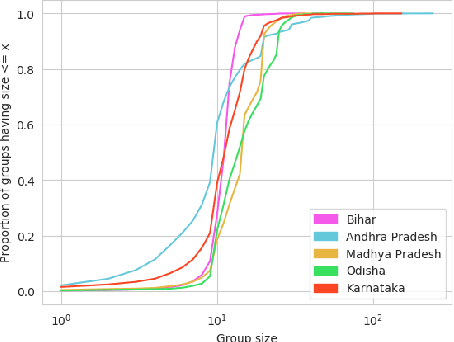
Abstract:The past decade has witnessed a rapid increase in technology ownership across rural areas of India, signifying the potential for ICT initiatives to empower rural households. In our work, we focus on the web infrastructure of one such ICT - Digital Green that started in 2008. Following a participatory approach for content production, Digital Green disseminates instructional agricultural videos to smallholder farmers via human mediators to improve the adoption of farming practices. Their web-based data tracker, CoCo, captures data related to these processes, storing the attendance and adoption logs of over 2.3 million farmers across three continents and twelve countries. Using this data, we model the components of the Digital Green ecosystem involving the past attendance-adoption behaviours of farmers, the content of the videos screened to them and their demographic features across five states in India. We use statistical tests to identify different factors which distinguish farmers with higher adoption rates to understand why they adopt more than others. Our research finds that farmers with higher adoption rates adopt videos of shorter duration and belong to smaller villages. The co-attendance and co-adoption networks of farmers indicate that they greatly benefit from past adopters of a video from their village and group when it comes to adopting practices from the same video. Following our analysis, we model the adoption of practices from a video as a prediction problem to identify and assist farmers who might face challenges in adoption in each of the five states. We experiment with different model architectures and achieve macro-f1 scores ranging from 79% to 89% using a Random Forest classifier. Finally, we measure the importance of different features using SHAP values and provide implications for improving the adoption rates of nearly a million farmers across five states in India.
Phase retrieval with physics informed zero-shot learning
Jun 08, 2021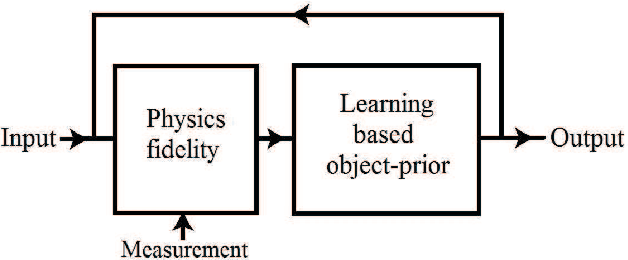
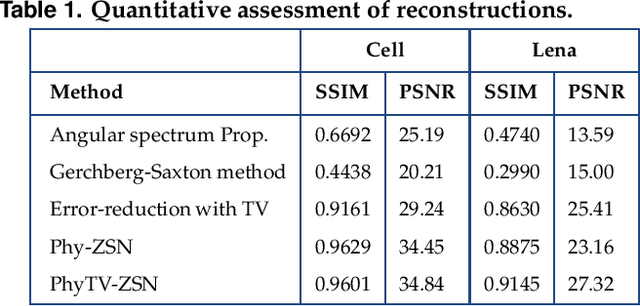
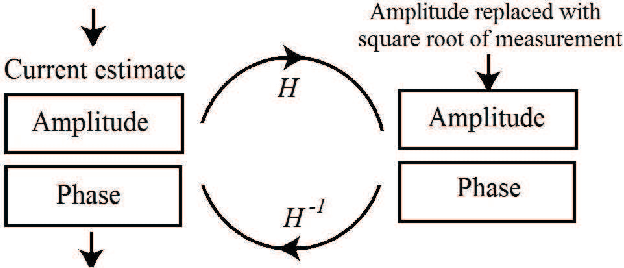
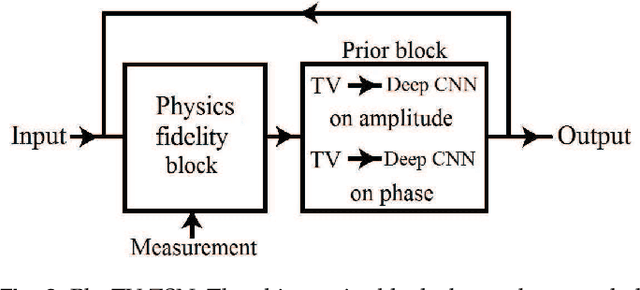
Abstract:Phase can be reliably estimated from a single diffracted intensity image, if a faithful prior information about the object is available. Examples include amplitude bounds, object support, sparsity in the spatial or a transform domain, deep image prior and the prior learnt from the labelled datasets by a deep neural network. Deep learning facilitates state of art reconstruction quality but requires a large labelled dataset (ground truth-measurement pair acquired in the same experimental conditions) for training. To alleviate this data requirement problem, this letter proposes a zero-shot learning method. The letter demonstrates that the object-prior learnt by a deep neural network while being trained for a denoising task can also be utilized for the phase retrieval, if the diffraction physics is effectively enforced on the network output. The letter additionally demonstrates that the incorporation of total variation in the proposed zero-shot framework facilitates the reconstruction of similar quality in lesser time (e.g. ~8.5 fold, for a test reported in this letter).
 Add to Chrome
Add to Chrome Add to Firefox
Add to Firefox Add to Edge
Add to Edge